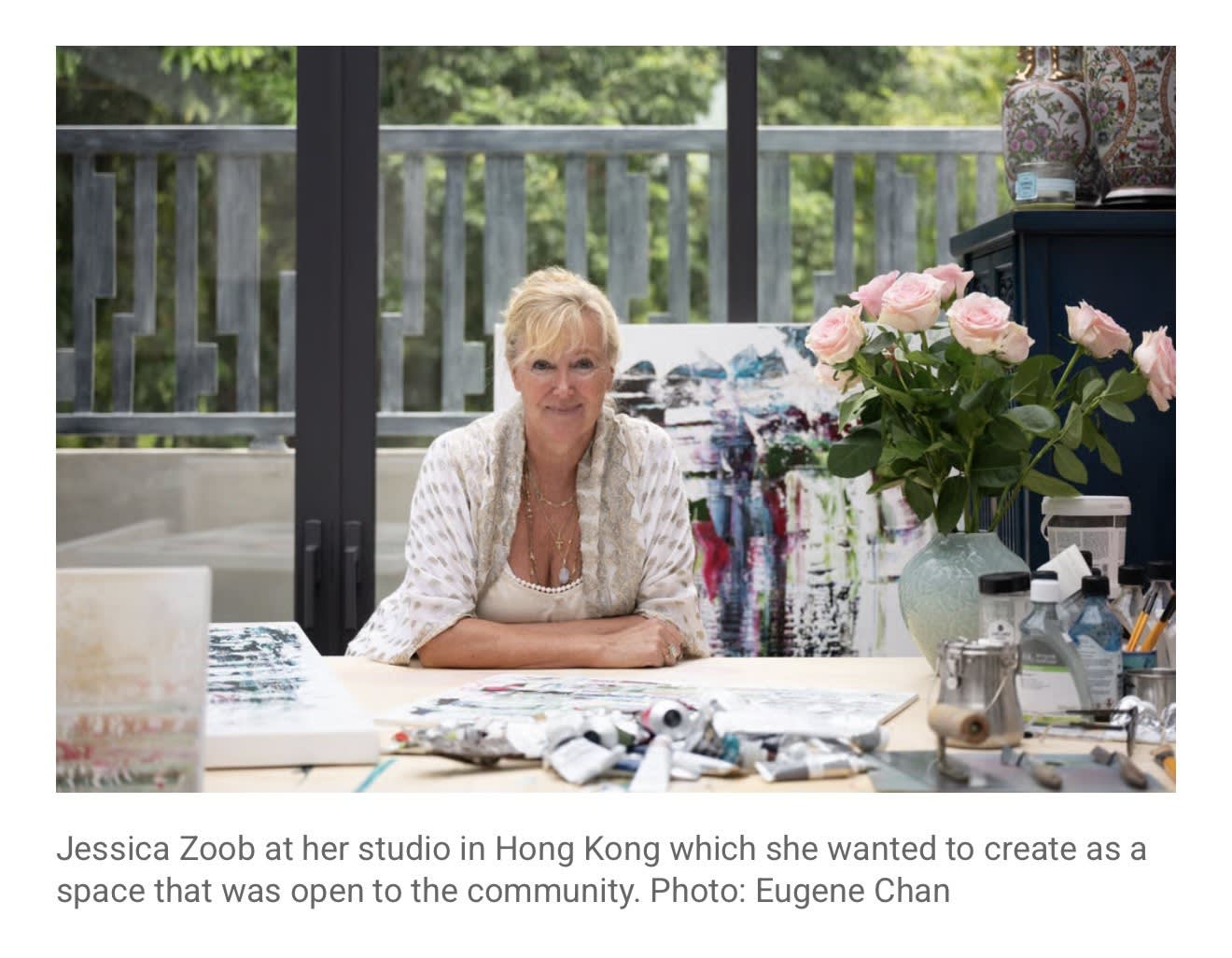-
I am so thrilled to tell you I have been featured in The South China Morning Post and interviewed on the radio too! It was a big gamble opening a gallery over here but it is delightful to be made so welcome!! 
-
 This Summer I was lucky enough to be invited to collaborate with the amazing Hong Kong Sinfonietta. Huge images of my works were projected behind the orchestra as they played Ravel.
This Summer I was lucky enough to be invited to collaborate with the amazing Hong Kong Sinfonietta. Huge images of my works were projected behind the orchestra as they played Ravel.Here is an extract from an interview with Music Director Emeritus Yip Wing-sie hosted by Annemarie Evans on the Hong Kong Heritage programme on Radio 3 about the concerts.
Here is a short film made by Hong Kong Sinfonietta which was screened at the event. This was filmed at Art Basel Hong Kong 2022 and in my tiny Hong Kong studio.

With lots of love from Hong Kong xx
-
Now in this moment
We share this world
And it is precious -
I am opening my studio for one day before Christmas, November 30th 11.30am – 5.30pm
This will be an opportunity to buy original works, fine art prints and art inspired Christmas gifts.
I have also invited some lovely local businesses to join me.
-

One of my favourite things about May is my annual visit to the Decorative Living Fair. My sister in law, Caroline Zoob, started this fair thirteen years ago with her friend Hetty Purbrick, and it has become a favourite fixture for devotees of decorative antiques all over the country. I know just how much care is taken in choosing the exhibitors, not letting the fair grow too big – as so many do – and in matching the style and feel of the fair to the exceptional beauty of the location. From the moment you turn into the drive and see the parkland, edged with cow parsley and dotted with baby lambs, to the first glimpse of the spectacular view across the Sussex weald, you start to relax.
-
It is almost time for one of my favourite days of the year, when I visit The Decorative Living Fair at Eridge Park, Organised by my sister-in-law Caroline Zoob, and her friend Hetty Purbrick, it is a lovely fair, set on the lawns of the main house, with spectacular views across the Kentish Weald. There are over seventy exhibitors, all of whom seem to make special efforts to create truly fabulous displays for this event. It is almost overwhelming, to see so many beautiful things, displayed so creatively, in such a gorgeous setting. I have found so many interesting things for my new home here, and am looking forward to finding a few finishing touches this week.

-
